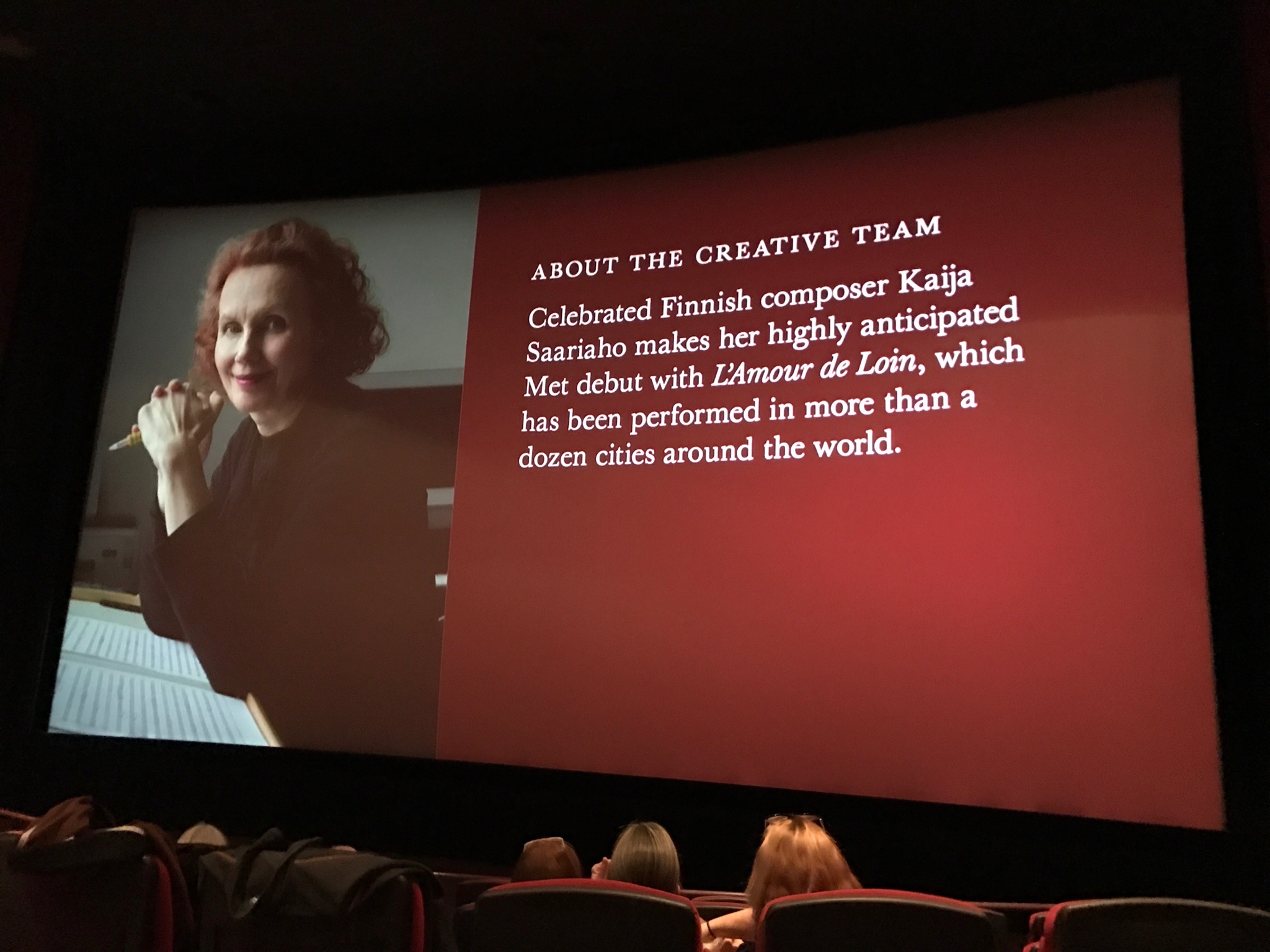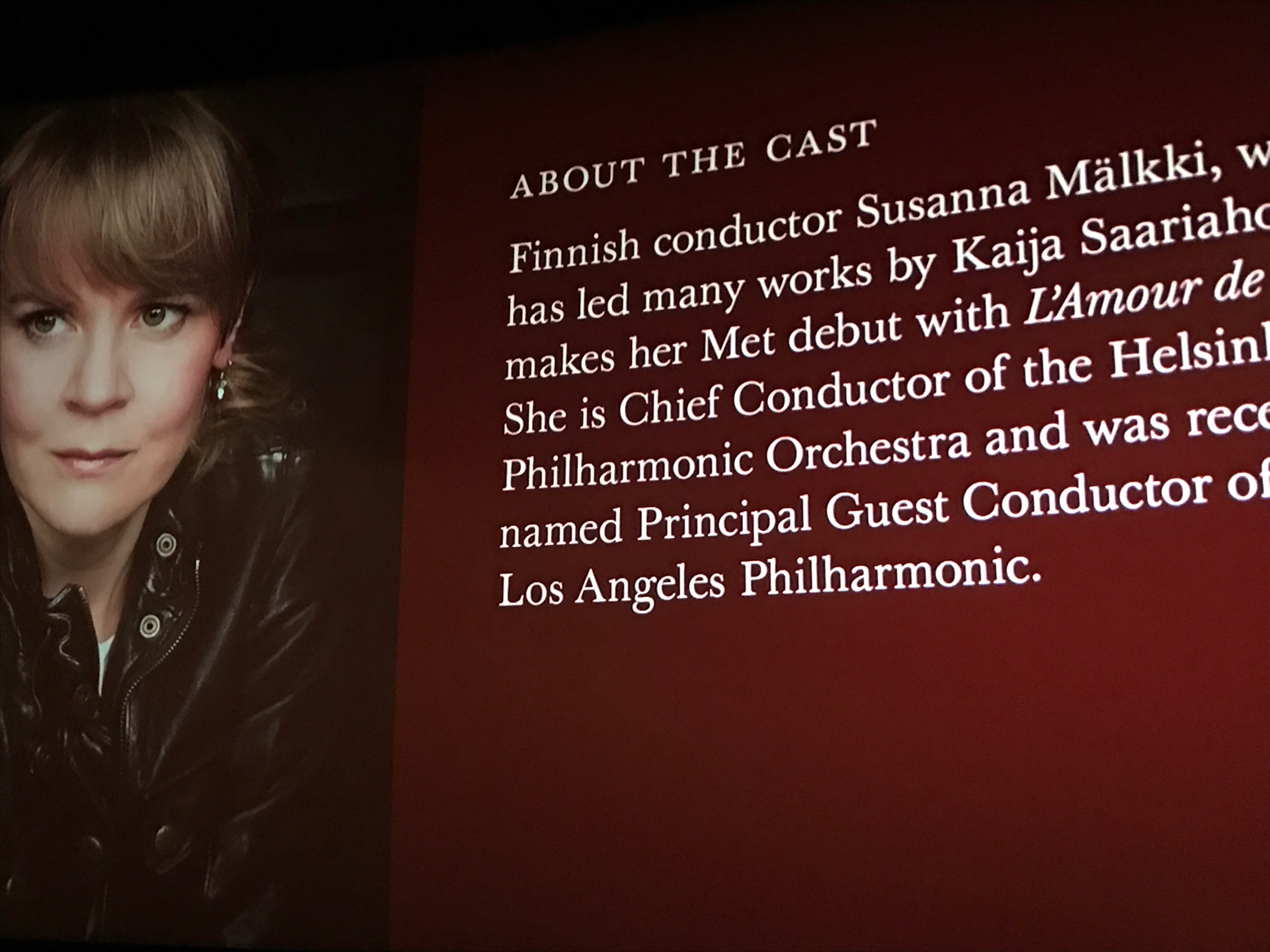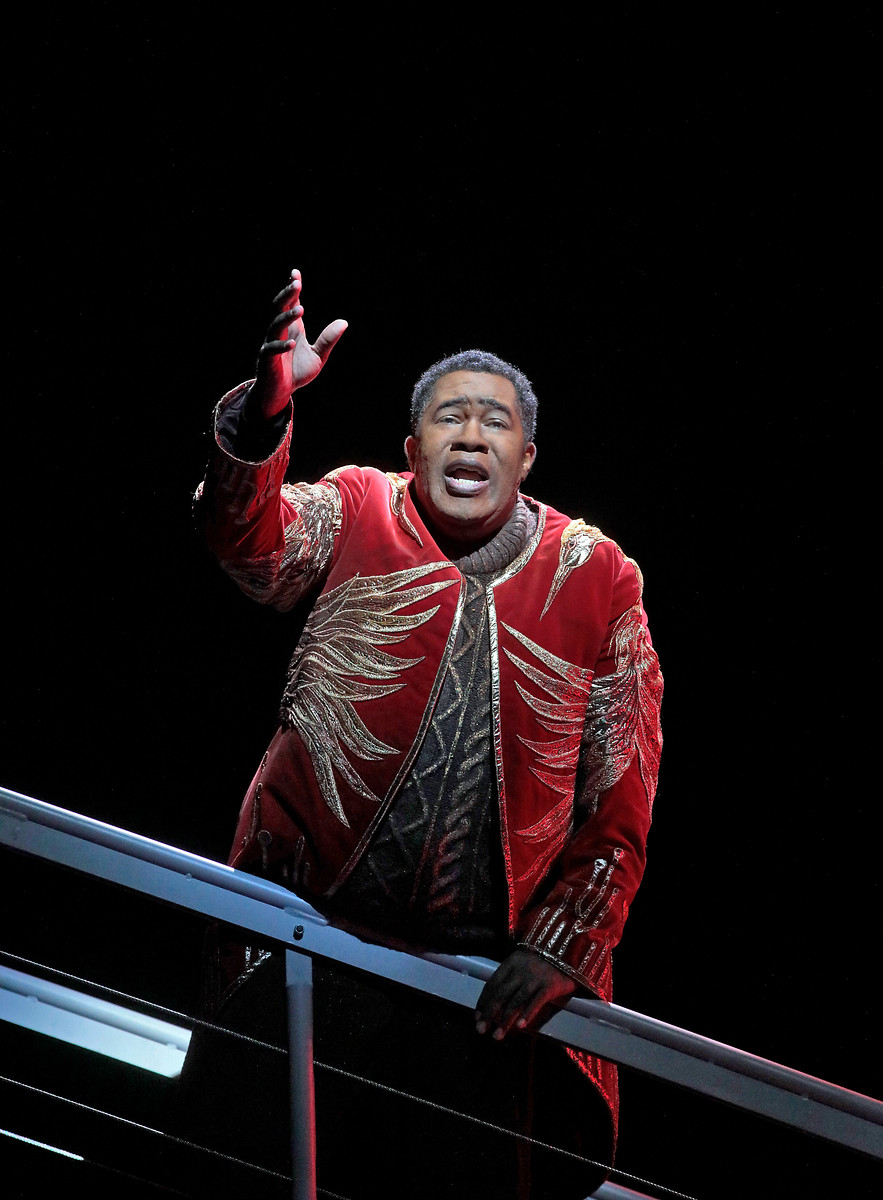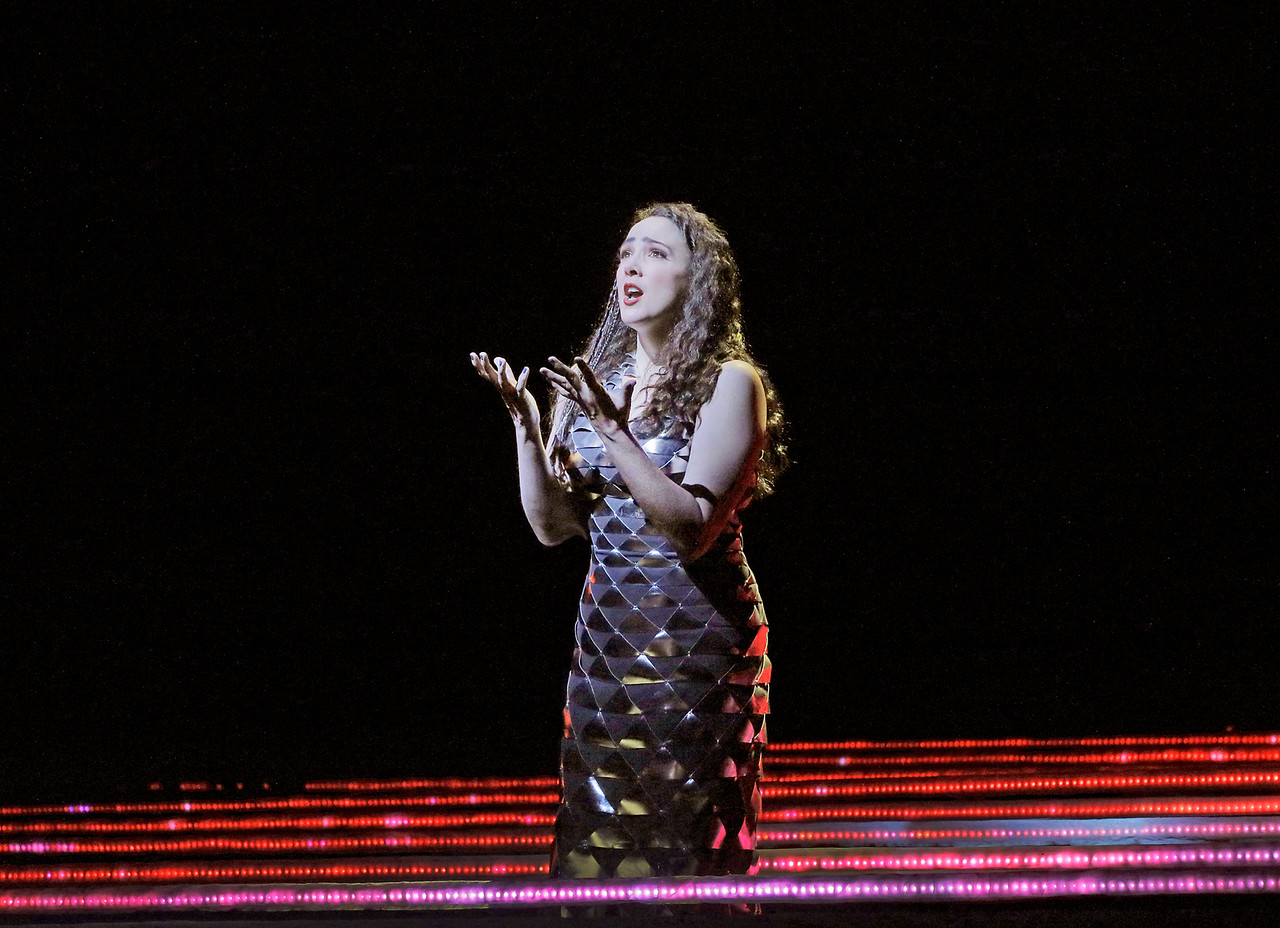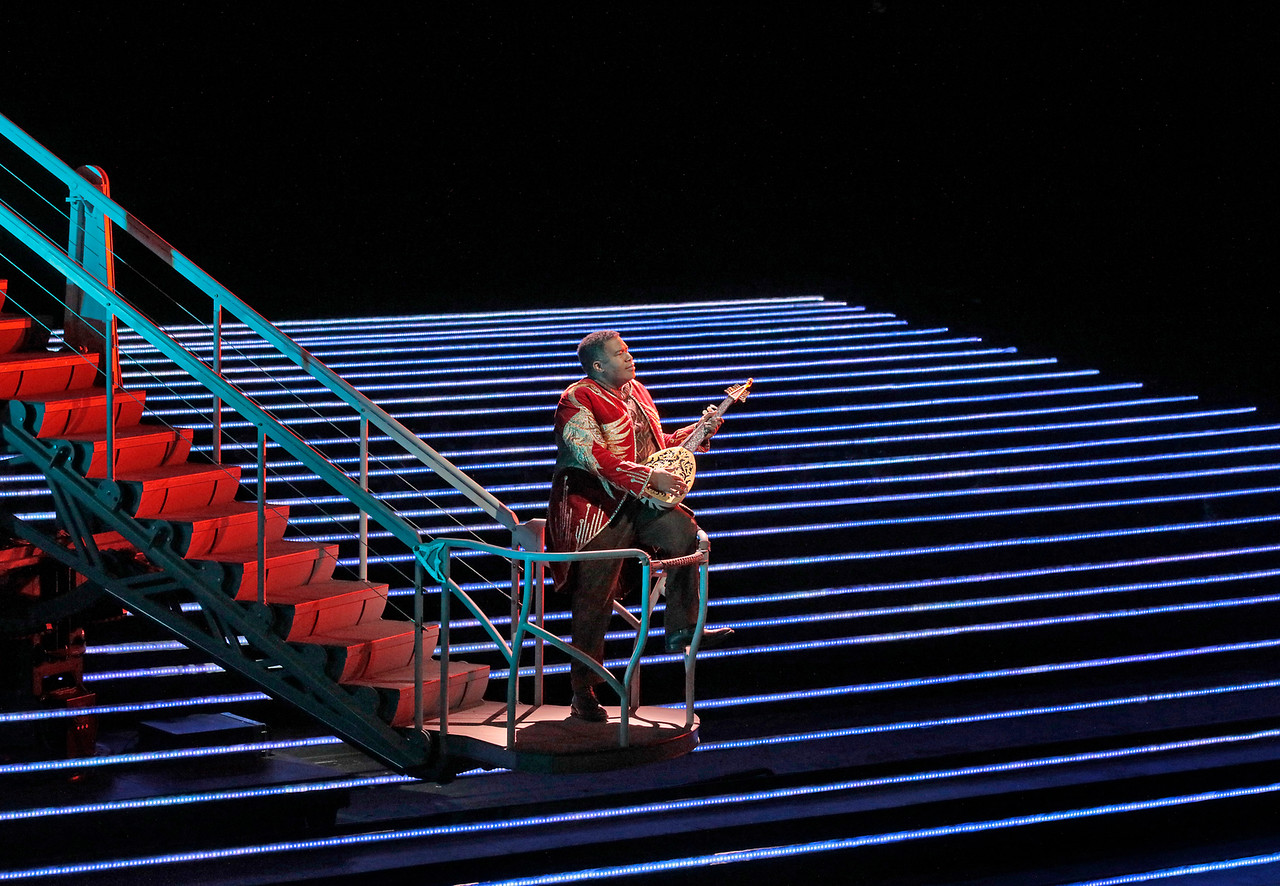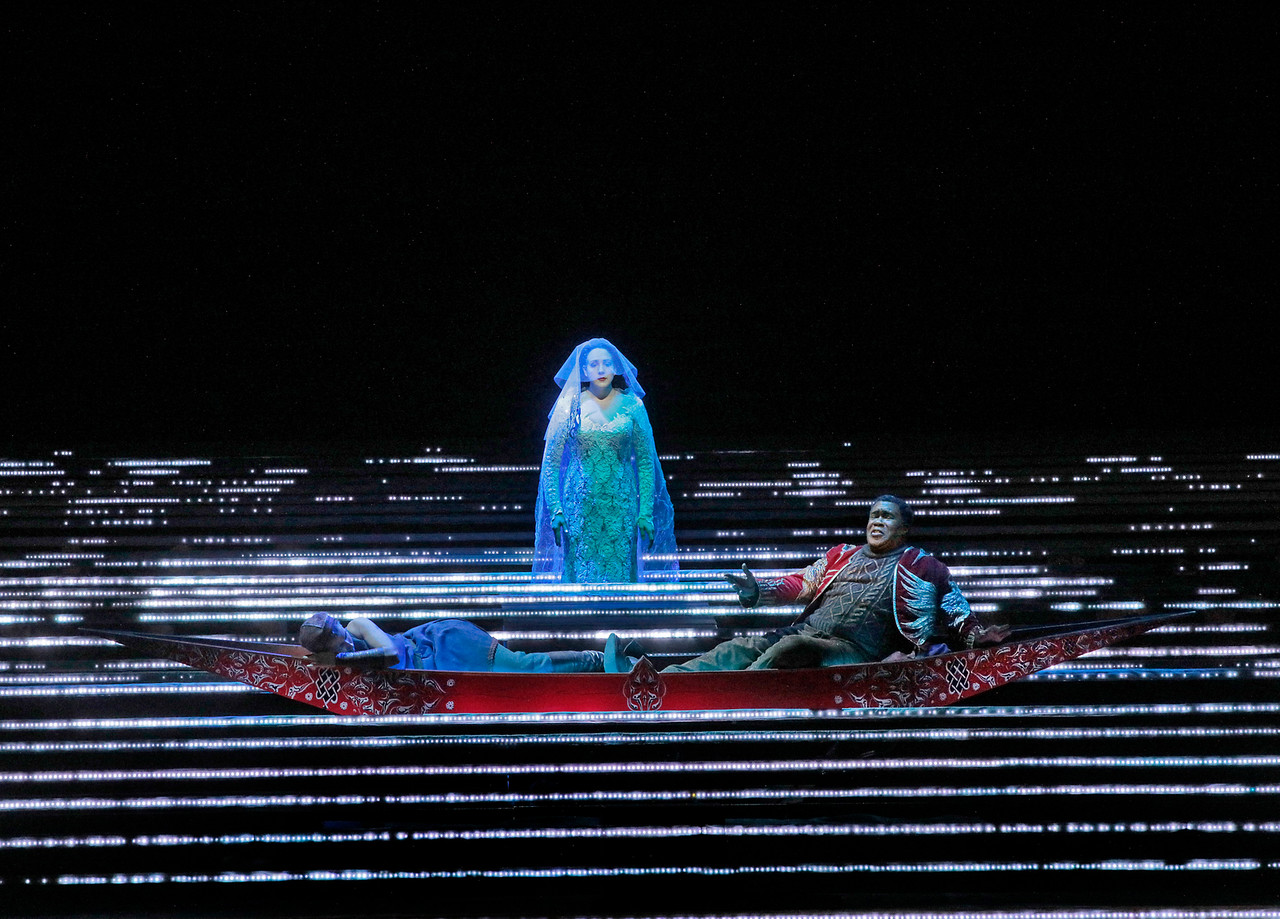Opening panels in Met Opera live in HD broad cast of L'Amour de Loin, December 10, 2016; photos by Debra Rogers.
My wife and I attended the December 10 live in HD cinema showing of Metropolitan Opera’s production of L’Amour de Loin. The appeal for me to go was a cast that included Eric Owens and Susanna Phillips, the fact we were not going to be able to travel to NYC any time soon, and the history making aspect of a Met opera having a woman composer and a woman conductor together for the first time ever. I consider the last point to be especially important because supporting this opera could make it easier for other women composers, such as Jennifer Higdon or Missy Mazzoli, to get their operas performed by the Met and other major opera houses.
Eric Owens as Jaufre; Tamara Mumford as the Pilgrim; and, Susanna Phillips as Clemence. Photos by Ken Howard; courtesy of the Metropolitan Opera.
Now, having seen the production, what can I tell you? The tale is a good one: wandering troubadour Jaufre falls in love with a woman Clemence that he has not seen; a pilgrim carries messages across the sea between them, and in the finale, they meet. I like this opera. In fact, I like it quite a lot. But I find it harder to articulate why than I might have thought. Kaija Saariaho’s L’Amour is unlike, in terms of music and staging, any opera I have seen. Descriptions from reviews place it in the genre of European Modernism; they praised the music and stated it was filled with shimmering and haunting sounds. I found this accurate. It is also lyrical and emotionally engaging. The music is intimately bound to Amin Maalouf’s libretto, bathing it with feeling. Then there is Robert Lepage’s staging. It was surreal and poignant in significant ways – the sea playing an important role of separating the lovers and the crane providing a focal platform for the lovers separate stations. Nonetheless, I wish I had seen another staging of L’Amour to compare it to. The rows of LED lights used to simulate the sea separating the two lovers Jaufre and Clemence likely had more sparkle in person. In video, they were slightly blurred. And the surreal nature of having the chorus and images moving among the waves with the wandering crane requires that you immerse yourself in the fantasy.
Jaufre on the mobile crane; the Pilgrim and Jaufre crossing the sea with Jaufre seeing Clemence as an apparition; the chorus in the sea and Clemence on the mobile crane. Photos by Ken Howard; courtesy of the Metropolitan Opera.
L’Amour is rare in that there are only three singers in this two and a half hour opera, and each has many solos. There is little margin for error in the singing; mistakes would have been out front for everyone to see and hear. I detected none. The cast and their performances were outstanding. Eric Owens as Jaufre was his usual stellar self with his rich bass-baritone voice. Susanna Phillips was spectacular! Such a beautiful soprano tone and flawless in execution. A bit of a surprise for me was Tamara Mumford, the mezzo soprano who sang the Pilgrim’s role. Her colorful deep register was put to full use and she also sang beautifully. She held her own with two Met luminaries. If for no other reason, go to hear these performers. The acting was also excellent. And for the video broadcast this is even more important because of the constant close-ups utilized; those attending the opera in person have only a constant view of the whole stage.
If you didn’t make it to the Dec 10 broadcast and are unable to make it to the Met for any of the remaining performances, you can catch an encore performance of the Dec 10 broadcast to be shown in Regal Theaters on Dec 21 at 6:30 pm; use this link to find theaters near you. I want to add that video viewing benefits from a special feature of intermission interviews, that included all the singers as well as composer Saariaho, librettist Maalouf, and conductor Susanna Malkki; these were excellent additions not seen when you are at Lincoln Center. These interviews are a clear advantage for the video broadcasts. Debra Voight is the host for the broadcast, and for amusement, try to copy her pronunciation of L’Amour de Loin (remember, the French pronounce “oi” as “wa”); good luck.

